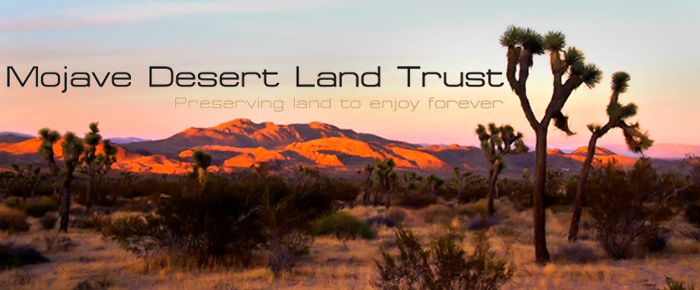
In an unfortunate situation, the musician Beth Orton recently filmed a music video during which she spray-painted a Joshua tree and a cholla cactus. The release of her video created a concerned response over such treatment of the rare and important ecosystem that is the Mojave Desert. Orton subsequently pulled the video offline and apologized for her actions.
Beth Orton has personally reached out to Mojave Desert Land Trust (MDLT) to express her extreme regret for this incident and her desire to work with us in an effort to educate others about the need to steward, protect, and respect the desert. We are engaged in conversation and look forward to developing a way to turn her actions into a positive outcome.
Statement from Danielle Segura, Executive Director of Mojave Desert Land Trust:
“The Mojave Desert is a unique ecosystem, as rare and important as a tropical rainforest or a coral reef for its biodiversity and ecological functions. It also has a long history of attracting artists who come here for inspiration and reflection. At the same time that artists find inspiration in the Mojave Desert, it is important that the art they create here represents care and respect for this special landscape.
We appreciate that Beth Orton regrets her prior actions, and that she intends to educate others about the natural beauty of the Mojave Desert, and the responsibility we collectively share for protecting this unique environment from vandalism and harm.”
Official Statement Released From Beth Orton:
“I have learned that it doesn’t always take malice to be destructive. It is vital to stay awake to the environment and give it the care it deserves. I am profoundly sorry for my lapse in judgment that afternoon. I have been humbled and I want to share what I am learning in the hope that it might stop others acting from a place of ignorance as I did. I am grateful to be working with the Mojave Desert Land Trust to find a way for my mistake to help raise awareness about the importance of protecting this rare desert environment. The desert is a work of art in and of itself and is most beautiful when we respect and protect it, when it is left as it is found.”
Background on the California Desert:
• The desert has a tough exterior, yet the resiliency of its underlying ecosystems can be very vulnerable. An interconnected web of life has evolved to thrive in the desert’s harsh conditions, much of which is difficult to see at first glance.
• The California Desert is an ecological gem containing rare and endangered species – both plant and animal. Habitats and landscape connections that have not been lost need to be preserved, rather than rebuilt.
• The California Desert is a frontier for discovery of new species; more than half of the species new to science in California have been found here in the state’s arid lands.
• The Joshua tree (yucca brevifolia), slow to adapt and migrate, is already dying out in parts of Joshua Tree National Park as temperatures continue to rise and the risk of wildfires increases. Scientists have found it could lose 90% of its current habitat in the park by century’s end. Rangewide, Joshua trees are sensitive to the effects of a changing climate and stand to lose the overwhelming majority of their habitat this century, which has prompted some requests for it to be officially listed as a threatened species.
• Most of the plants in the desert have underground roots that are deeper and greater than what one observes on the surface – one might think of this as a forest turned upside down.
• Research now proves that the desert soils under intact plant communities are a carbon sink, therefore acting to absorb and offset carbon from the earth’s atmosphere.
• Native people have made the California Desert home for thousands of years, leaving traces of intricate cultures that are still intact today.
• The pristine landscapes and skies of the California Desert are known around the world and have been featured in National Geographic’s Top 100 Most Beautiful Places. The greatest assets to this beauty according to visitor polls are the long, unbroken scenic vistas.
• The California Desert encompasses 28% of the State of CA – thereby providing a significant natural buffer protecting air and water quality for urban populations.
Mojave Desert Land Trust (MDLT) is a 501(c)(3) non-profit organization whose mission is to protect the Mojave Desert ecosystem and its scenic and cultural resource values through acquisition, land stewardship and strategic partnerships. Since 2006 the organization has protected over 60,000 acres of desert land.










































